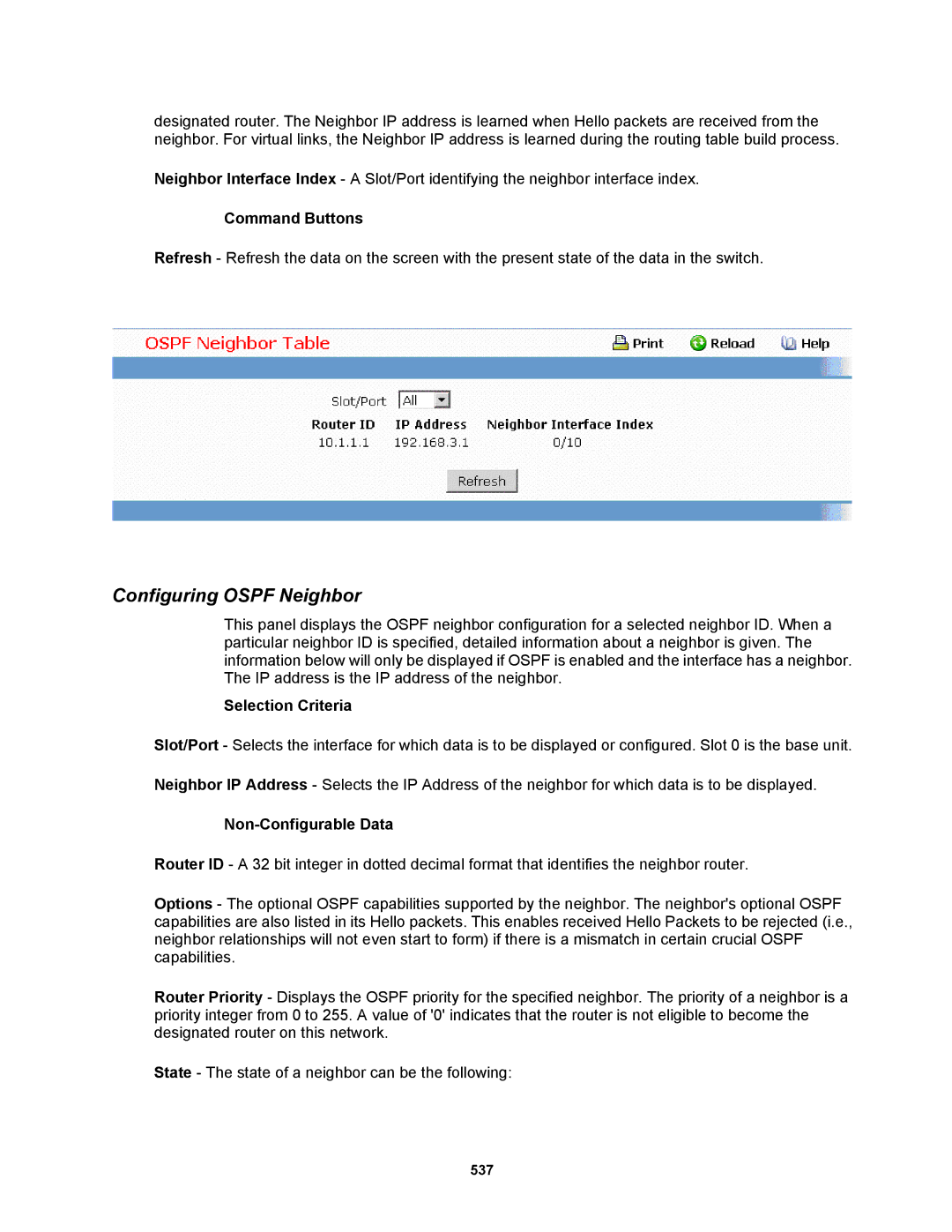
designated router. The Neighbor IP address is learned when Hello packets are received from the neighbor. For virtual links, the Neighbor IP address is learned during the routing table build process.
Neighbor Interface Index - A Slot/Port identifying the neighbor interface index.
Command Buttons
Refresh - Refresh the data on the screen with the present state of the data in the switch.
Configuring OSPF Neighbor
This panel displays the OSPF neighbor configuration for a selected neighbor ID. When a particular neighbor ID is specified, detailed information about a neighbor is given. The information below will only be displayed if OSPF is enabled and the interface has a neighbor. The IP address is the IP address of the neighbor.
Selection Criteria
Slot/Port - Selects the interface for which data is to be displayed or configured. Slot 0 is the base unit.
Neighbor IP Address - Selects the IP Address of the neighbor for which data is to be displayed.
Non-Configurable Data
Router ID - A 32 bit integer in dotted decimal format that identifies the neighbor router.
Options - The optional OSPF capabilities supported by the neighbor. The neighbor's optional OSPF capabilities are also listed in its Hello packets. This enables received Hello Packets to be rejected (i.e., neighbor relationships will not even start to form) if there is a mismatch in certain crucial OSPF capabilities.
Router Priority - Displays the OSPF priority for the specified neighbor. The priority of a neighbor is a priority integer from 0 to 255. A value of '0' indicates that the router is not eligible to become the designated router on this network.
State - The state of a neighbor can be the following:
537
